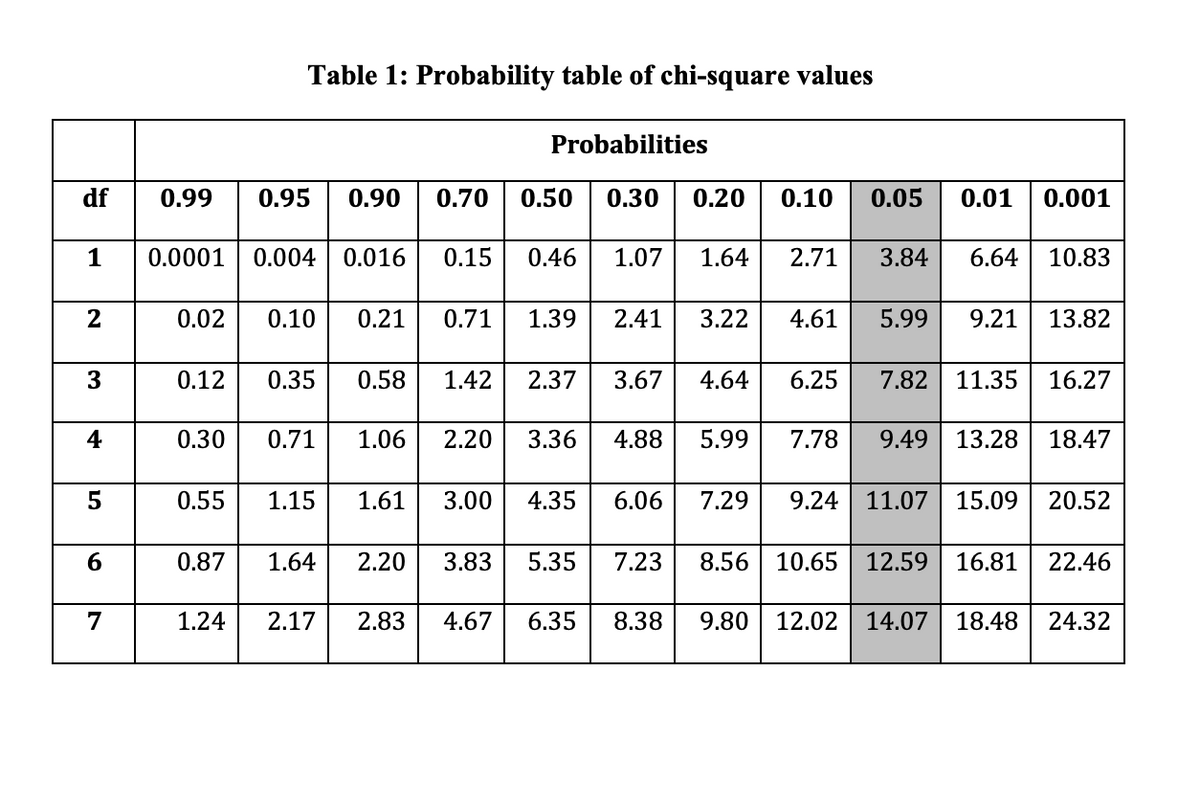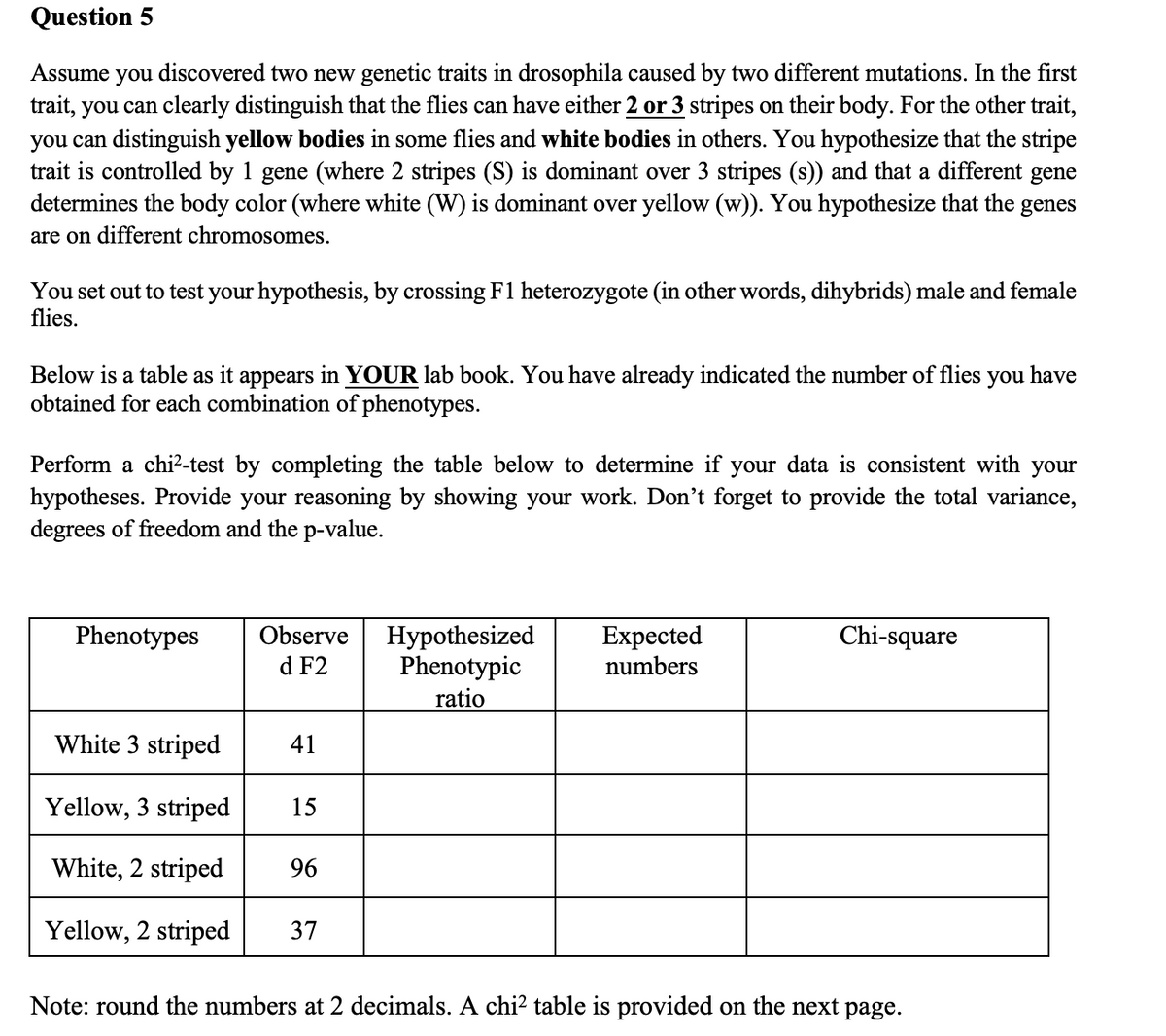Question 5 Assume you discovered two new genetic traits in drosophila caused by two different mutations. In the first trait, you can clearly distinguish that the flies can have either 2 or 3 stripes on their body. For the other trait, you can distinguish yellow bodies in some flies and white bodies in others. You hypothesize that the stripe trait is controlled by 1 gene (where 2 stripes (S) is dominant over 3 stripes (s)) and that a different gene determines the body color (where white (W) is dominant over yellow (w)). You hypothesize that the genes are on different chromosomes. You set out to test your hypothesis, by crossing F1 heterozygote (in other words, dihybrids) male and female flies. Below is a table as it appears in YOUR lab book. You have already indicated the number of flies you have obtained for each combination of phenotypes. Perform a chi²-test by completing the table below to determine if your data is consistent with your hypotheses. Provide your reasoning by showing your work. Don't forget to provide the total variance, degrees of freedom and the p-value. Expected numbers Phenotypes Observe Hypothesized Phenotypic ratio Chi-square d F2 White 3 striped 41 Yellow, 3 striped 15 White, 2 striped 96 Yellow, 2 striped 37 Note: round the numbers at 2 decimals. A chi² table is provided on the next page.
Molecular Techniques
Molecular techniques are methods employed in molecular biology, genetics, biochemistry, and biophysics to manipulate and analyze nucleic acids (deoxyribonucleic acid (DNA) and ribonucleic acid (RNA)), protein, and lipids. Techniques in molecular biology are employed to investigate the molecular basis for biological activity. These techniques are used to analyze cellular properties, structures, and chemical reactions, with a focus on how certain molecules regulate cellular reactions and growth.
DNA Fingerprinting and Gel Electrophoresis
The genetic makeup of living organisms is shown by a technique known as DNA fingerprinting. The difference is the satellite region of DNA is shown by this process. Alex Jeffreys has invented the process of DNA fingerprinting in 1985. Any biological samples such as blood, hair, saliva, semen can be used for DNA fingerprinting. DNA fingerprinting is also known as DNA profiling or molecular fingerprinting.
Molecular Markers
A known DNA sequence or gene sequence is present on a chromosome, and it is associated with a specific trait or character. It is mainly used as a genetic marker of the molecular marker. The first genetic map was done in a fruit fly, using genes as the first marker. In two categories, molecular markers are classified, classical marker and a DNA marker. A molecular marker is also known as a genetic marker.
DNA Sequencing
The most important feature of DNA (deoxyribonucleic acid) molecules are nucleotide sequences and the identification of genes and their activities. This the reason why scientists have been working to determine the sequences of pieces of DNA covered under the genomic field. The primary objective of the Human Genome Project was to determine the nucleotide sequence of the entire human nuclear genome. DNA sequencing selectively eliminates the introns leading to only exome sequencing that allows proteins coding.


Step by step
Solved in 2 steps with 3 images









